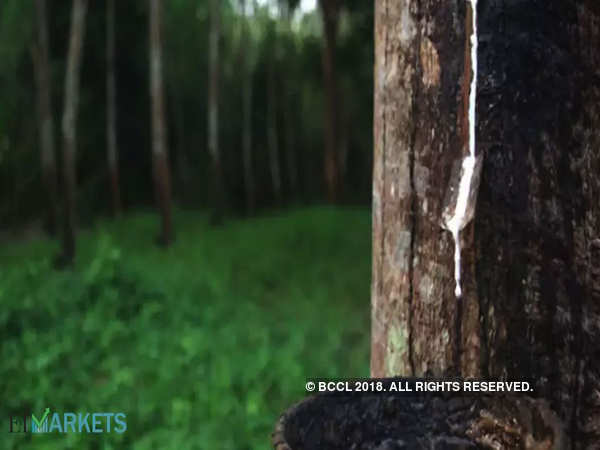 Natural Rubber accounts for over 20% of Kerala’s total area under cultivation and Kerala contributes to the largest share (84%) of output in the country.
Natural Rubber accounts for over 20% of Kerala’s total area under cultivation and Kerala contributes to the largest share (84%) of output in the country.
KOCHI: Expected decline in the Indian natural rubber output by 18 to 20% this fiscal year will adversely impact the tyre industry, says ICRALtd., an investment information and credit rating agency.
It has cited the flood in Kerala due to unusually high rainfall as the cause for the sharp fall in natural rubber (NR) which accounts for 35% of the overall input costs in the manufacture of tyres. This may result in pressure on operating margins of tyre manufacturers, ICRA said.
K Srikumar, vice president, corporate sector ratings, ICRA said: “Inundation and landslides in few districts, apart from the possible threat of diseases on immature plants will dampen the production over the next few months, the critical tapping season. We expect the NR output to decline by 1.2-1.4 lakh tonnes (18-20%)l during FY2019. NR accounts for 32% and 35% of total inputs, in volume and value terms respectively, with other key inputs including crude derivatives like synthetic rubber, carbon black, fabric, rubber chemicals etc. ‘’
NR accounts for over 20% of Kerala’s total area under cultivation and Kerala contributes to the largest share (84%) of output in the country. India is the second largest consumer (8% of global output) of NR, after China. During FY2018, India produced 6.9 lakh tonnes of NR but consumed 11.1 tonnes , with the supply gap being fully met through imports from Indonesia, Thailand, Vietnam, etc.
Imports have accounted for 40% of consumption in the last five years; and the same is expected to reach 50% during FY2019 with the shortfall envisaged in output. In absolute terms, NR imports are expected to reach all-time high of 5.3-5.5 lakh tonnes in FY2019, ICRA said in a statement.
Globally, there was a supply shortfall of 7 lakh tonnes during Jan-July 2018 due to lower production by Malaysia, Vietnam and India on the back of unfavorable weather conditions, and controlled production by Thailand. However, with increased tapping in other key regions in the next few months, the global shortfall scenario should improve.
“As the domestic NR prices continue to increase due to supply shortage concerns, domestic tyre makers continue to import with the current landed costs lower than domestic prices. However, with the expected rise in both domestic and global prices, exacerbated by the depreciating rupee, the tyre manufacturers are likely to witness pressure on margins. ICRA expects a 100-bps contraction in operating profit margins for FY2019,’’ Srikumar said.
With demand exceeding supply, domestic NR prices have increased by over 10% during the period Apr-Aug 2018, including an increase of over 5% in the last one month. However, the global NR prices were down by 9% during Apr-Aug 2018 following concerns over off-take from China. Though the global prices are trading at a 25% discount to domestic prices (as of end August 2018), this is expected to be short-lived with global demand outstripping supply and receding stock levels.


























